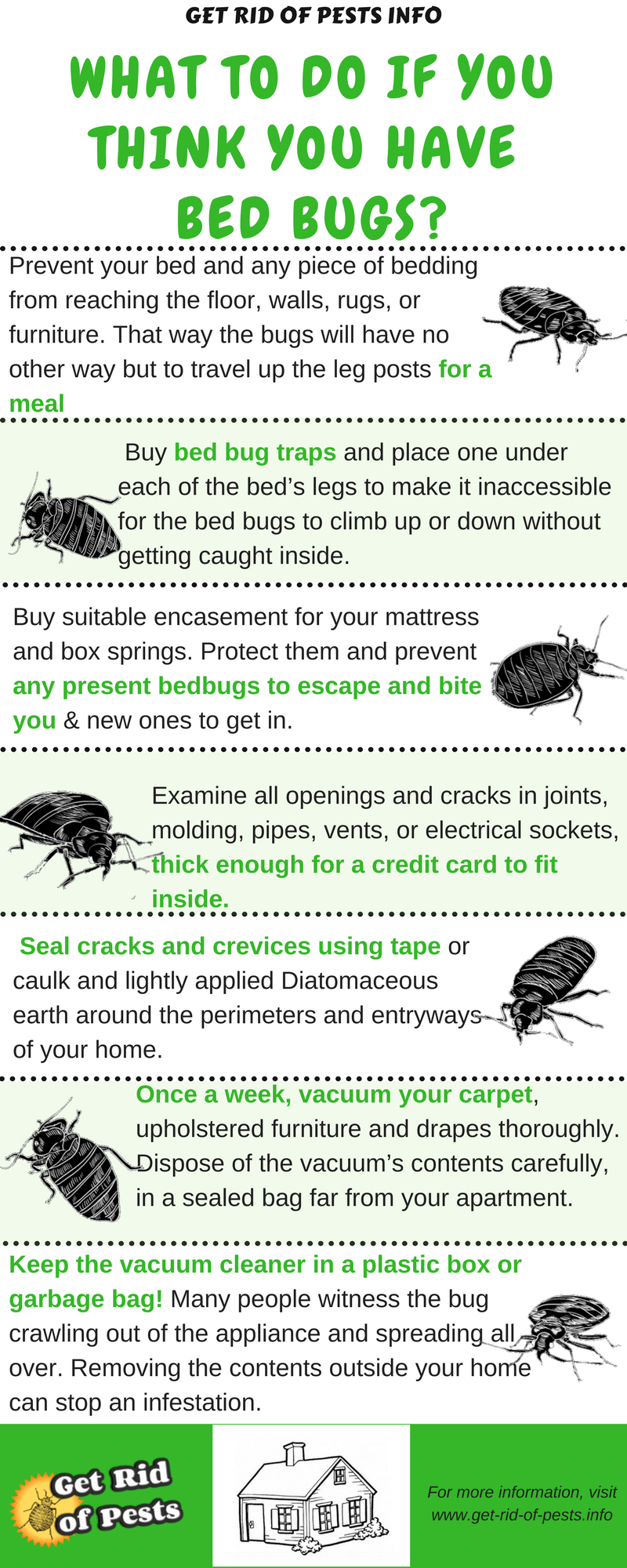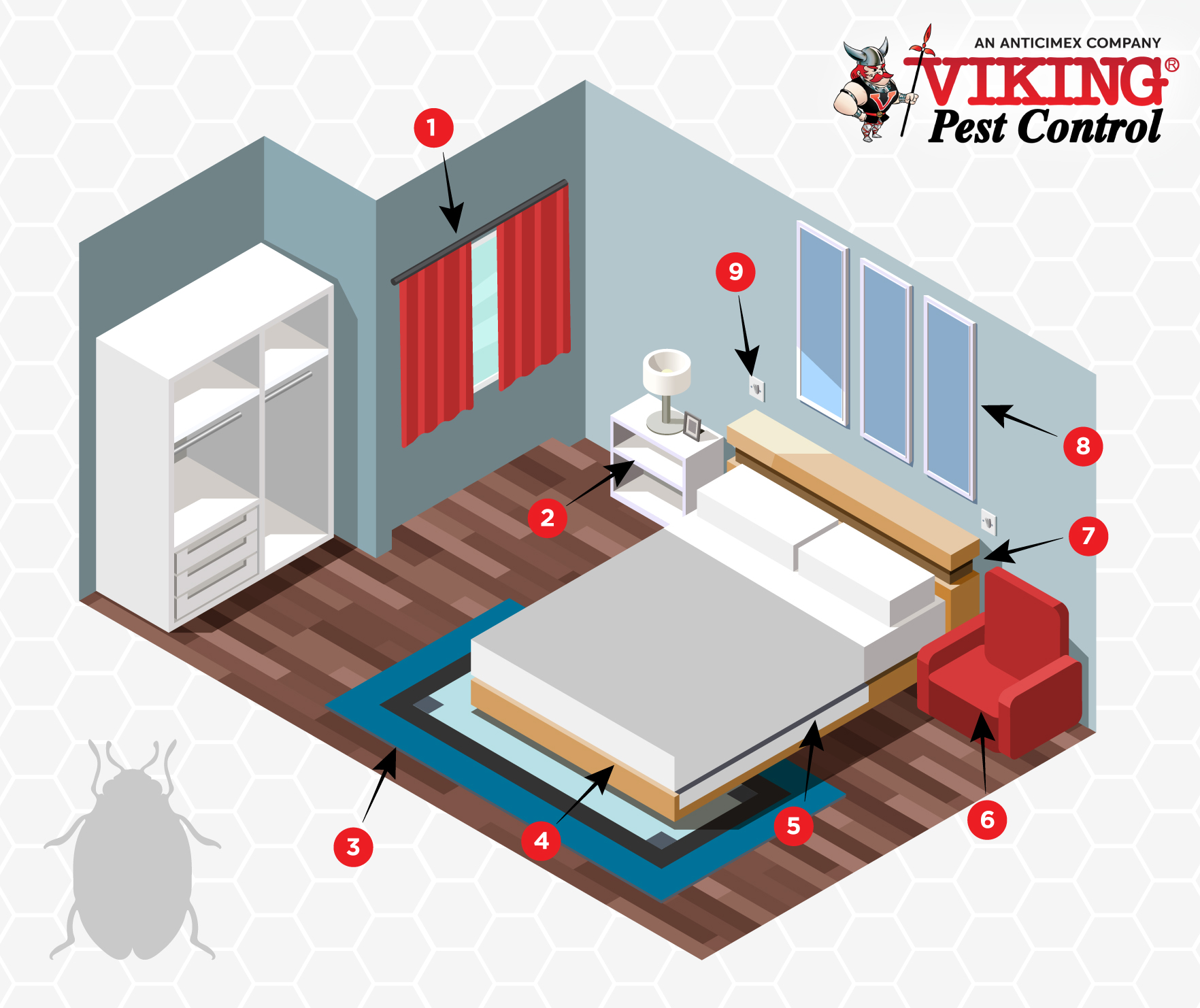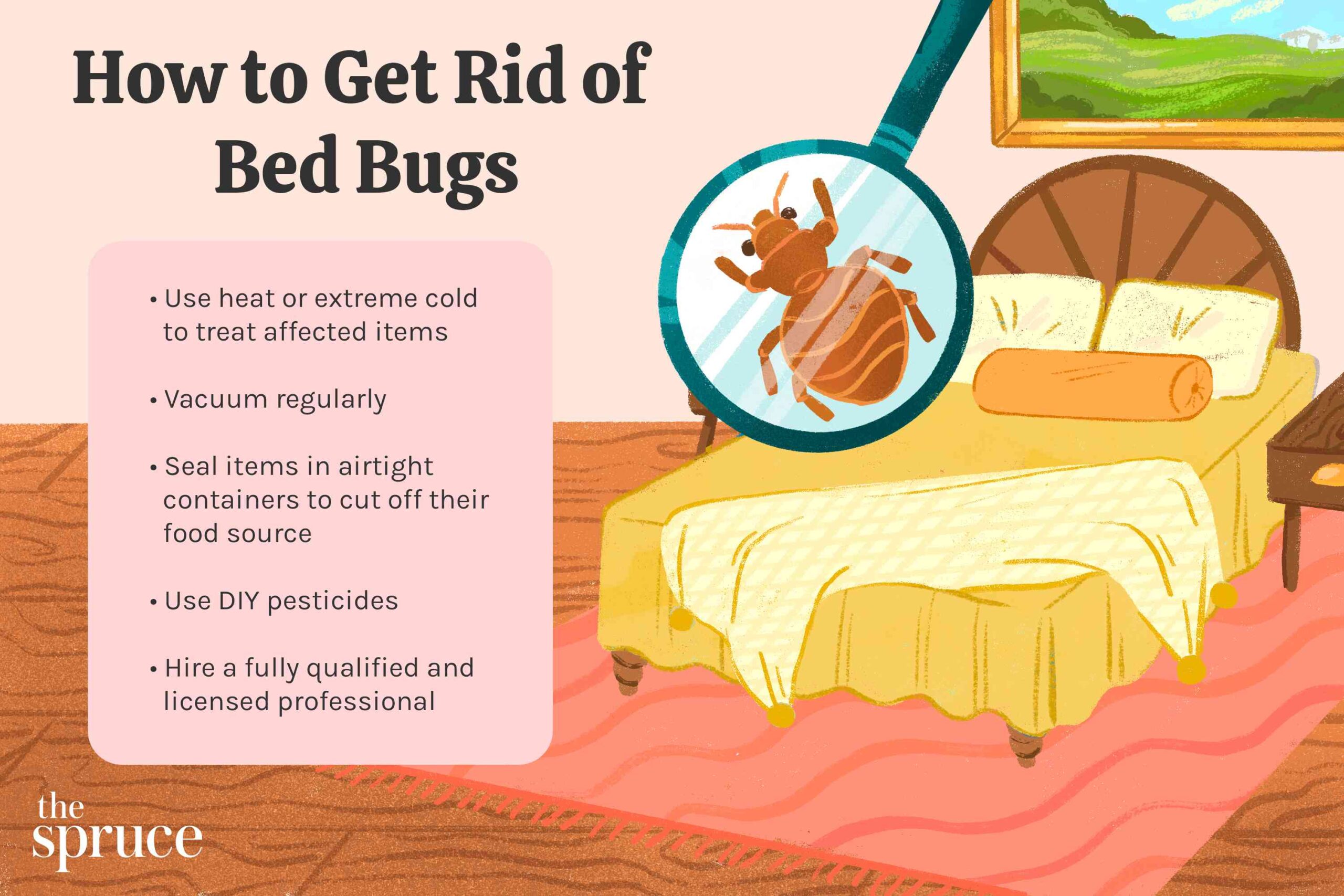To treat your home for bed bugs, start by thoroughly cleaning and decluttering the infested areas, then vacuum and steam clean to eliminate the bugs and their eggs. Consider using professional pest control for severe infestations or if home treatments fail to eradicate the problem.
Dealing with a bed bug infestation can be a frustrating and stressful experience, but it’s crucial to address the issue promptly to prevent further spread and discomfort. In this guide, we will outline effective methods and strategies to help you treat your home for bed bugs.
By following these steps and being diligent in your approach, you can successfully eliminate bed bugs and restore comfort and peace of mind to your home. Let’s dive into the practical solutions for addressing a bed bug problem and regaining control of your living space.

Credit: medium.com
Identifying A Bed Bug Infestation
Visual Inspection
Start by examining mattress seams, box springs, and cracks for live bugs.
Bite Marks
Look for small red, raised bumps on skin, often in a line pattern.
Blood Stains
Check for dark spots on sheets or pillowcases, a sign of bed bug waste.
Preparing Your Home For Treatment
Preparing Your Home for Treatment: Before treating your home for bed bugs, it’s crucial to prepare the space properly to ensure a successful extermination process.
Decluttering
- Remove unnecessary items to eliminate hiding spots for bed bugs.
- Organize belongings to make it easier to identify infested areas.
- Clear out closets and drawers to expose potential bed bug hiding spots.
Washing And Drying
- Wash bedding, linens, and clothing in hot water to kill bed bugs.
- Dry items on high heat to eliminate any remaining bed bugs or eggs.
- Seal clean items in plastic bags to prevent re-infestation.
Vacuuming
- Thoroughly vacuum carpets, furniture, and cracks to remove bed bugs.
- Dispose of vacuum bags in sealed plastic bags to prevent bed bugs from spreading.
- Use a crevice tool to reach tight spaces where bed bugs may hide.
Professional Treatment Options
Discover effective professional treatment options for eradicating bed bugs from your home. Utilize expert services to address bed bug infestations swiftly and efficiently. Trust in professional expertise for a thorough and lasting solution.
When it comes to dealing with a bed bug infestation, sometimes it’s necessary to call in the professionals. They have the knowledge, experience, and resources to effectively eliminate these pesky bugs from your home. In this section, we will explore three commonly used professional treatment options: chemical treatments, heat treatments, and bed bug dogs.Chemical Treatments
Chemical treatments involve using specially formulated insecticides to target and eliminate bed bugs. These treatments can be applied as sprays, dusts, or aerosols. The chemicals used are designed to disrupt the bed bugs’ nervous systems, leading to their eventual demise. Professionals will carefully evaluate your home to determine the extent of the infestation and which areas need to be treated. They will then apply the appropriate chemicals to these areas, taking care to follow all safety protocols. It’s important to note that chemical treatments may require multiple visits to ensure the complete eradication of the bed bugs.Heat Treatments
Heat treatments are another effective method used by professionals to eliminate bed bugs. This method involves raising the temperature of the infested areas to a level that is lethal to bed bugs. The high temperatures typically range from 120 to 140 degrees Fahrenheit and are maintained for several hours. This heat effectively kills bed bugs in all life stages, including eggs. Heat treatments are considered a safe and environmentally-friendly option as they do not involve the use of harmful chemicals. However, it’s important to hire professionals who have experience and the necessary equipment to carry out these treatments effectively.Bed Bug Dogs
Bed bug dogs have become increasingly popular in recent years for detecting bed bug infestations. These specially trained dogs have an incredible sense of smell and can detect the presence of bed bugs with a high level of accuracy. When brought into your home, the dog will swiftly search for any signs of bed bugs, including their eggs, fecal matter, and shed skin. This allows professionals to quickly identify the problem areas and target their treatment accordingly. Using bed bug dogs can be a time-saving and efficient option when it comes to locating and eliminating these pests from your home.In conclusion, professional treatment options such as chemical treatments, heat treatments, and bed bug dogs can be highly effective in treating your home for bed bugs. These methods are designed to eliminate bed bugs at every stage of their lifecycle and ensure complete eradication. It’s important to consult with professionals who have expertise in dealing with bed bug infestations to ensure that the treatments are carried out safely and efficiently.
Credit: www.vikingpest.com
Diy Treatment Methods
When it comes to dealing with a bed bug infestation, DIY treatment methods can be an effective and affordable option. Here are some DIY methods you can use to treat your home for bed bugs:
Steam Cleaning
Steam cleaning is a highly effective method for eliminating bed bugs and their eggs. The high temperature of the steam is enough to kill bed bugs on contact, making it a non-toxic and environmentally friendly treatment option. When using a steam cleaner, ensure that the surface reaches a temperature of at least 160°F to effectively eradicate bed bugs.
Freezing
Freezing is another DIY treatment method that can be effective in killing bed bugs. Items such as bedding, clothing, and soft toys can be placed in plastic bags and then placed in the freezer for several hours. The extreme cold temperature will kill the bed bugs and their eggs. However, it’s important to note that this method may not be as effective for larger furniture pieces or heavily infested areas.
Natural Remedies
Using natural remedies can also help in the treatment of bed bugs. Items such as diatomaceous earth, tea tree oil, lavender oil, and neem oil have been found to have insecticidal properties that can help in eliminating bed bugs. These natural remedies can be applied to infested areas or used as a preventive measure to deter bed bugs from infesting your home.
Treating Bed Bugs In Different Areas Of The Home
Treating bed bugs in different areas of the home is crucial to completely eradicate these pests. Bed bugs can infest various areas, making it essential to target each space separately to ensure thorough treatment. In this section, we will explore how to effectively treat bed bugs in bedrooms, living rooms, and on carpets and rugs.
Treating Bedrooms
Treating bedrooms effectively is essential in eliminating bed bug infestations. Follow these steps to rid your bedroom of these pests:
- Inspect the bed frame, mattress, and furniture for bed bugs and their eggs.
- Remove and wash all bedding, curtains, and clothing in hot water and dry on the highest heat setting.
- Use a vacuum with a brush attachment to thoroughly clean the mattress, furniture, and baseboards.
- Apply bed bug insecticide or diatomaceous earth to cracks, crevices, and other potential hiding spots.
Treating Living Rooms
Bed bugs can also infest living rooms, so it’s crucial to address this area. Follow these steps to treat bed bugs in living rooms:
- Inspect and vacuum upholstered furniture, including seams, cushions, and underneath the furniture.
- Wash and dry curtains, throw blankets, and pillow covers on high heat.
- Apply bed bug spray to potential hiding areas such as furniture joints and crevices.
- Encase infested furniture in special bed bug-proof covers to trap and kill the pests.
Treating Carpets And Rugs
Carpets and rugs can harbor bed bugs, requiring specific treatment methods. Use the following steps to treat these areas for bed bugs:
- Thoroughly vacuum the carpet, focusing on baseboards, under furniture, and along the edges of the room.
- Steam clean the carpet and rugs to kill bed bugs and their eggs.
- Apply diatomaceous earth or baking soda to the carpet and let it sit before vacuuming again.
- Consider professional pest control services for severe infestations in carpets and rugs.
:max_bytes(150000):strip_icc()/Bed-bug-control-tips-and-tricks-2656377-e580f433c55a4a98826e429753062084.jpg)
Credit: www.thespruce.com
Preventing Future Infestations
Once you have successfully treated your home for bed bugs, it is crucial to take preventive measures to avoid future infestations. By sealing cracks and crevices, using mattress and box spring encasements, and conducting regular inspections, you can significantly reduce the risk of bed bugs finding their way back into your home.
Sealing Cracks And Crevices
One of the most effective ways to prevent bed bugs from entering your home is by sealing all cracks and crevices where they can hide or gain access. Inspect your walls, baseboards, furniture, and electrical outlets for any potential entry points. Use a high-quality caulk to seal these openings, ensuring there are no gaps left behind for the bed bugs to sneak through.
Using Mattress And Box Spring Encasements
Your mattress and box spring are prime hiding spots for bed bugs. To protect these areas and prevent future infestations, consider investing in mattress and box spring encasements. These specially designed covers provide a barrier that bed bugs cannot penetrate, effectively sealing them off from their hiding places. Ensure that the encasements you choose are bed bug-proof and have a secure zipper closure to provide maximum protection.
Regular Inspection
Regular inspections play a crucial role in preventing bed bug infestations from going unnoticed and worsening. Make it a habit to inspect your home thoroughly, including your furniture, upholstery, and bedding, on a regular basis. Keep an eye out for signs of bed bugs such as dark spots, shed skins, or actual bugs. If you suspect any infestation, act immediately to address the issue before it becomes a larger problem.
Remember, prevention is key when it comes to dealing with bed bugs in your home. By following these preventive measures, you can minimize the chances of future infestations and enjoy a bed bug-free environment.
Frequently Asked Questions Of How To Treat Your Home For Bed Bugs?
What Are The Common Signs Of A Bed Bug Infestation?
Bed bugs leave behind small, reddish-brown fecal spots, shed skins, and a sweet, musty odor. Itchy welts on the skin may also indicate their presence.
How Can I Effectively Treat My Home For Bed Bugs?
To treat your home for bed bugs, start by decluttering and cleaning thoroughly. Then, use a combination of vacuuming, steaming, and insecticide treatments for the best results.
Are There Any Natural Methods To Eliminate Bed Bugs From My Home?
Yes, you can use natural solutions like diatomaceous earth, tea tree oil, and heat treatments to kill bed bugs without harsh chemicals.
Can I Handle A Bed Bug Infestation On My Own Or Should I Hire A Professional?
It’s advisable to seek professional help for severe infestations. DIY methods can be effective for minor cases. Professional pest control ensures comprehensive elimination.
Conclusion
To effectively treat your home for bed bugs, these tips should be followed diligently. Regularly vacuum your home, paying close attention to crevices and cracks. Wash and dry bedding on high heat to kill any potential infestations. Consider using mattress and box spring encasements to prevent bed bug entry.
Be vigilant in checking for early signs of bed bugs, such as bloodstains or discarded exoskeletons. Finally, seek professional help if the infestation persists. Remember, early detection and prompt action are key to successfully treating and preventing bed bug infestations in your home.
Related posts:

I’m MD Tanvir, and I bring years of expertise gained from working closely with pest control companies to the forefront. My journey in the industry has inspired me to launch Bug Battler, a platform aimed at equipping people with the know-how to combat pests autonomously. Through Bug Battler, I aim to empower individuals with practical insights to tackle pest infestations effectively.

